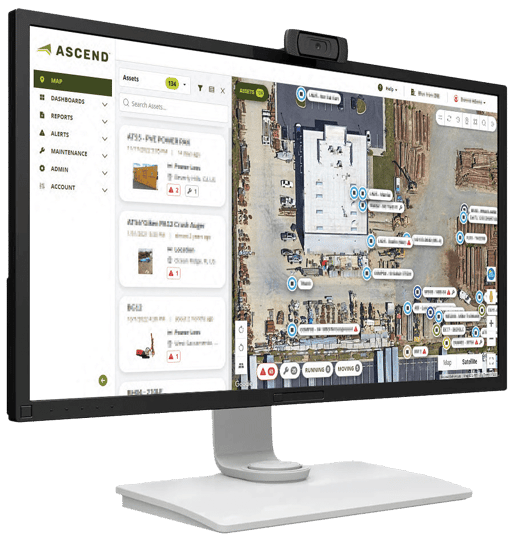GPS tracking of construction assets can provide a wealth of useful information to help better manage your operations
When it comes to construction fleets, there is a wide variety of useful data that can be captured, aggregated, and shared using a telematics system.
After all, mixed construction fleets encompass a wide range of vehicles and assets that can include trucks, yellow iron, trailers, semis, pick-up trucks, portable generators and lights, and so much more. And while there will be different data needs associated with each of these pieces, GPS asset tracking is especially useful.
GPS asset tracking via telematics devices installed on each asset can capture a wealth of data including location, engine hours, idle time, usage, and on-site job time. When GPS tracking is integrated with other telematics data streams, such as those associated with routing and dispatch, inspection, and maintenance, the results can be improvements in efficiency, less unplanned downtime for servicing assets, and a more complete view of fleet status and performance.
Among the specific benefits of GPS capabilities is:
 Tracking and locating assets. One of the greatest challenges of a mixed construction fleet management is keeping track of the whereabouts of the various assets. It’s especially problematic when planning jobs and trying to locate equipment needed at a specific jobsite on a specified day. Indeed, if you aren’t sure where an asset even is, it will be impossible to optimize its utilization.
Tracking and locating assets. One of the greatest challenges of a mixed construction fleet management is keeping track of the whereabouts of the various assets. It’s especially problematic when planning jobs and trying to locate equipment needed at a specific jobsite on a specified day. Indeed, if you aren’t sure where an asset even is, it will be impossible to optimize its utilization.
Preventing and recovering lost assets. With GPS asset tracking in a telematics system, you can set up geofencing and alerts. This geofencing software capability makes you aware when a piece of equipment exits the designated area. In the case of unauthorized use or theft, the real-time GPS tracking also makes this equipment easy to track and recover.
Greater accuracy in bidding and billing. The hard location, engine, and usage data that can be gathered through GPS asset tracking makes it easier to bid on jobs and to compile accurate invoices while offering tighter overall financial control for your business.
Taking better care of your equipment. When real-time GPS asset tracking data is combined with equipment monitoring and diagnostics, assets in need of repair can be identified and quickly scheduled for maintenance to minimize downtime. Preventative maintenance can also be combined with these reactive service measures to prolong asset lifespan and maximize returns when the equipment is sold.
More Than Location
GPS asset tracking is about more than knowing where your expensive equipment is at any given time. It’s also about gaining a complete view of your entire fleet so you can make smarter decisions for how to utilize it to please customers and drive profitability.
Of course, GPS asset tracking is its most valuable when it is applied to all the assets in your fleet. If you have the right telematics system provider, they can provide the right hardware for each piece of equipment and connect it all to your telematics platform to provide you with the data you need.
Tying everything together isn’t easy, but with the right partner, the hard work will fall to them, while you will be able to reap the benefits.

